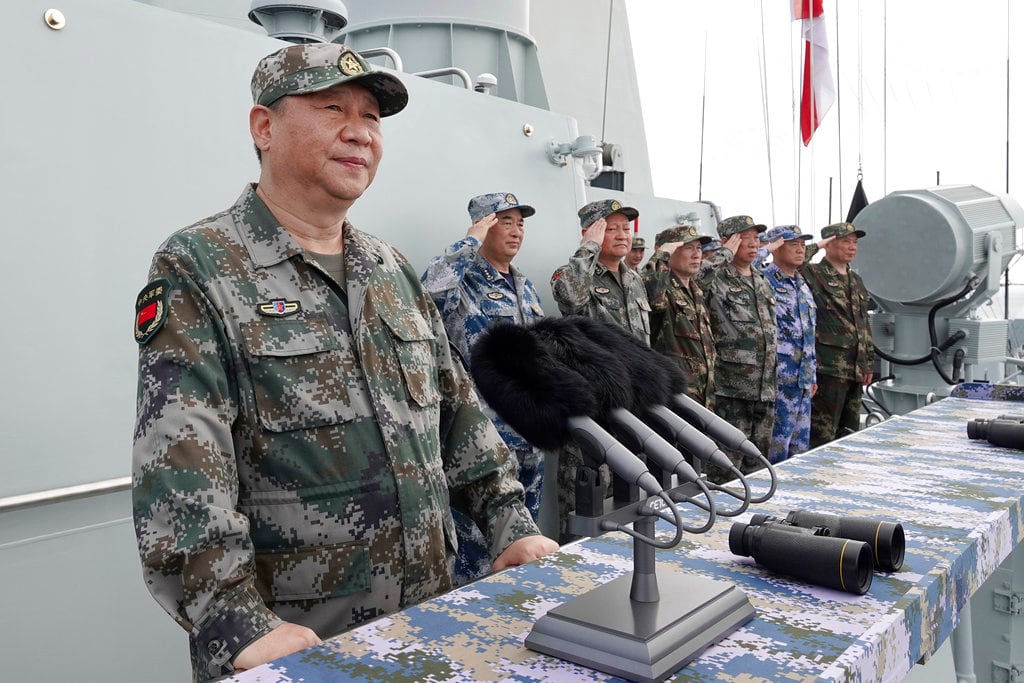The U.S. combatant command responsible for the Indo-Pacific region warned in a report last month that it lacks the resources and capabilities necessary to implement the National Defense Strategy. This mismatch between ends and means endangers American interests and invites Beijing to pursue opportunistic aggression.
U.S. Indo-Pacific Command’s sobering assessment demands urgent action in Washington. Notably, some leaders are already paying attention. Last Thursday, Rep. Mac Thornberry, R-Texas, the ranking member of the House Armed Services Committee, released draft legislation that would require the secretary of defense to establish and resource an Indo-Pacific Deterrence Initiative, or IPDI.
While details should be subject to good-faith negotiations on Capitol Hill and with the Pentagon, an IPDI would help close the gap between the capabilities the U.S. military needs in the Indo-Pacific and the capabilities it currently has. An IPDI would accomplish this by addressing serious shortfalls in force posture, procurement, infrastructure and logistics, while strengthening partner capacity and interoperability as well as improving training and exercise opportunities.
Like the European Deterrence Initiative, or EDI — a similar program designed to deter Russia — an IPDI would bring sustained focus on less glamorous but equally vital capabilities, especially infrastructure and logistics. An IPDI would also facilitate effective congressional oversight and demonstrate tangible American commitment that helps deter aggression. That’s essential to the successful implementation of the 2018 NDS, which concluded that “[l]ong-term strategic competitions with China and Russia are the principal priorities” for the Pentagon.
RELATED

The national security threat from Moscow is certainly formidable. But the department has rightly concluded that China’s large and growing economy, combined with its rapidly modernizing military, make it the “greater threat.”
The great power competition with China is global and plays out in every region, including the Middle East, but the outcome of the U.S.-China great power competition in the Indo-Pacific will have an outsized impact on U.S. security and prosperity for decades.
Indeed, the ability of the U.S. to work with like-minded allies and partners in the Indo-Pacific — such as Japan, Australia, India and Taiwan — to deter Chinese aggression may represent one of the most important challenges of the 21st century.
Last July, Chairman of the Joint Chiefs of Staff Gen. Mark Milley called China “the main challenge to the U.S. national security over the next 50-100 years.” Recognizing this fact, Secretary of Defense Mark Esper has described the Indo-Pacific as America’s “priority theater.”
Despite this laudable effort to establish strategic priorities, implementation remains a key challenge.
Following Moscow’s 2014 invasion and illegal annexation of Crimea, Congress and the administration moved quickly to establish the EDI (initially called the European Reassurance Initiative). Yet more than two years after the publication of the 2018 NDS, the United States still does not have an equivalent and properly funded deterrence initiative in the Indo-Pacific.
This delay has come at a cost. Because Washington has not yet provided INDOPACOM the resources it needs to implement the NDS, U.S. conventional deterrence in the Indo-Pacific has continued to erode dangerously.
To be fair, reversing the erosion of U.S. military supremacy and jump-starting long-delayed modernization programs takes time. The 2017 National Security Strategy and the NDS helped rouse Americans from their strategic slumber, alerting them to the Chinese Communist Party’s comprehensive campaign to undermine and displace the United States. In relatively short order, with the help of increased defense budgets and steady leadership from Secretary Esper, the Pentagon has initiated and advanced some of the most significant military modernization programs in decades.
But despite these praiseworthy efforts, INDOPACOM assesses that the military balance of power with China continues to become “more unfavorable.” The command warns that the U.S. military “lacks the capacity to integrate service recommended weapons and capabilities into a warfighting concept.” Consequently, the United States is accumulating “additional risk that may embolden our adversaries to attempt to unilaterally change the status quo before the U.S. could muster an effective response.”
Given the stakes, the burden of proof rests with anyone who supports the EDI but suggests the United States does not need a similar initiative in the even higher-priority Indo-Pacific.
As Rep. Thornberry has said: “It is time to put our money where our mouth is.”
Our war fighters in the Indo-Pacific have sounded the alarm and requested the resources they need to do their job. Leaders in Congress and the Pentagon should answer the call by establishing and funding an Indo-Pacific Deterrence Initiative this year.
Bradley Bowman is senior director for the Center on Military and Political Power at the Foundation for Defense of Democracies, where John Hardie is a research manager.








